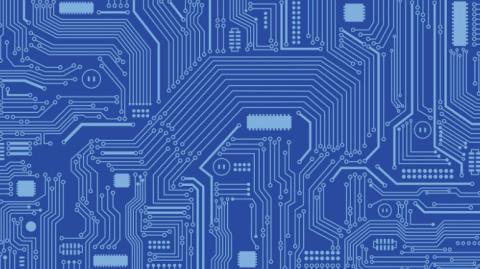Online Technical Training Blog

Using Circuit Simulation to Simulate Behavior of Electronics Circuits
In a world reliant on lightning-fast access to information, electronic controls, mobile devices, and more, it is perhaps more important than ever that manufacturers ensure that the circuits that drive their products are built efficiently and adhere to industry standards. Since there are many different products coming to market every day, circuit simulation software is vital to ensuring that these key components are manufactured and operate efficiently in a relatively short time frame.
In this article, we’ll examine the many benefits of utilizing circuit simulation software as well as the different types of simulators that can be used to perform the simulation.
What is Circuit Simulation Software?
As the name implies, the purpose of circuit simulation software is to test real-world scenarios involving electronic circuits, virtually. Having access to such a tool allows students and even those who’ve worked in the industry for years become more proficient in troubleshooting problematic circuits without the obvious limitations associated with working with real circuits.
At George Brown College, a software called CircuitLogix is used to bridge the gap between theory and hands-on learning. It helps students build, test, and troubleshoot complex circuits, with a library of over 4,000 devices. While this simulation software is designed to help train people who want to learn how to work with circuits, simulation software can be used outside of the classroom as well, aiding professional technicians enhance their current breadth of experience.
What are the Benefits of Using Circuit Simulation Software?
There are numerous benefits to using circuit simulation software, some being more obvious than others. The following is a concise breakdown of some of the key benefits:
- Cost – From a financial perspective, it is more fiscally desirable to acquire circuit simulation software to test the performance and efficiency of a circuit prior to expending the resources to create a physical circuit prior to testing.
- Ease of Modifications – Unlike physical electronic circuits, it is easy to modify the various components of a circuit for broader testing. Virtual testing also allows you to test the circuit against varying voltages and currents.
- Testing of Memory Related Processes – Specifically designed analog simulation allows the speed and latency of memory related processes to be analyzed.
- Troubleshooting Made More Efficient – In terms of time, discovering and troubleshooting a faulty circuit digitally requires far less time than it would take to solve the values (e.g. voltage, current, and power) by hand.
Types of Circuit Simulation
There are several different types of simulation software available. Each one is designed to serve a specific purpose where circuit accuracy, performance, or capacity is concerned. If you consider the aforementioned properties lie somewhere along a spectrum, you’d find analog simulators at one end and digital simulators at the other. This is because they’re both designed to simulate differing capabilities, for lack of a better term. For example, analog simulators are highly accurate and are primarily used to simulate small circuits. Conversely, at the other end of the spectrum, digital simulators provide the highest levels of performance and capacity but aren’t quite as accurate as an analog simulator. Also, unlike analog circuit simulators, digital simulators are used to simulate very large circuits.
So how are analog simulators more accurate? Well, this type of simulation relies on very detailed models of the circuit in question, using linear, non-linear, and a simpler table-based representation of the devices within the electronic circuit. Analog simulators also rely on mathematical algorithms to gauge the behaviour of the circuit, which also accounts for a higher degree of accuracy.
As mentioned above, digital simulators use HDL which creates a simpler model of the circuit (resulting in a less accurate test). In digital simulation, rather than propagating continuously varying signals, a few discrete voltage levels (primarily logic 0 and logic 1) are propagated. The methods to propagate these signals have varying degrees of accuracy regarding the propagation delay of the logic levels through the circuit.
In addition to digital and analog simulation, there is a third type of simulation software that is often used: mixed-mode circuit simulation. As you might suspect, this type of simulation software draws its approach to circuit simulation from both analog and digital software. The electronic circuit is divided between analog and digital “dominions”; analog simulation is used to perform an analog analysis of the circuit while digital simulation is used to perform a digital analysis. Essentially this allows larger circuits to be simulated more efficiently when compared to a standalone analog simulation.
Circuit Simulation Software Advances Technology
Circuit simulation software helps technicians plan and troubleshoot designs before executing their designs to ensure everything flows smoothly. It is thanks to this software that the world will continue to enjoy the rapid propagation of the technologies that make daily life easier. If you’re interested in learning about circuit simulation software or would like to find out more about Electronics Technician training, be sure to contact us today.


